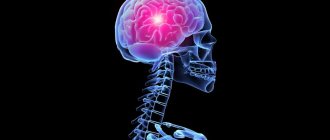The Leto mental health center provides treatment for hysterical psychopathy in children and adults. If you are faced with this disorder, call 8(969)060-93-93 and make an appointment.
Pathology is characterized by demonstrative behavior. The patient experiences a strong desire to be the center of attention and to receive a positive assessment from others for his every action. Abnormal symptoms begin in childhood and become more severe with age.
There is no need to hope that the disease will go away on its own. This is impossible. Over the years it will only progress. By starting treatment now, you will protect your psyche from irreversible changes.
Information about hysterical psychopathy
The disease is a personality disorder. Its main features:
- self-focus;
- the desire to gain attention at all costs from acquaintances, relatives, and strangers.
Hysteria is equally common in women and men. To stop negative symptoms, you need to determine the cause of the disease. To solve this problem, the Leto clinic carries out comprehensive psychological diagnostics.
Causes
There are no exact reasons for the development of the disease. Psychiatrists agree that it is associated with:
- genetic characteristics of a person;
- violations of the education system;
- organic brain damage in childhood.
From their parents, children can inherit increased emotionality, strong impressionability, and an inability to focus on little things. Brain disorders that lead to illness are most often birth injuries, as well as brain damage that occurred during pregnancy or in the first years of life.
There is an opinion that people suffer from hysterical psychopathy due to mistakes made by their parents during the upbringing process. Thus, it is bad if a mother or father instills in a child from an early age attitudes indicating that not everyone can be significant. Classifying people into important and “minor”, they talk about gender and social status. Because of such ideas, in adulthood a person feels inferior if he does not correspond to some parental guidelines.
Treatment
When the patient’s behavior begins to interfere with his ability to be in society, it is necessary to prescribe drug therapy. Treatment for paranoid psychopathy may include taking antidepressants to correct low mood. This could be Prozac, Fluoxetine, Haloperidol and other medications. Anxiety is relieved with Phenazepam or Mezapam. Depending on individual characteristics, antipsychotics may be prescribed for the treatment of paranoid psychopathy: Tizercin, Sonapax, etc. Medicines are taken only as prescribed by a doctor. Before using medications, you should consult a specialist.
The dosage should be controlled by the patient's relatives. This is necessary for the reason that patients with psychopathy often take medications in those doses that they themselves consider necessary. To correct paranoid psychopathy, a course of psychotherapy is prescribed. The most commonly used are behavioral-behavioral therapy, the direction of family systemic therapy, and the Gestalt approach.
Symptoms of hysterical psychopathy in men and women
The first dangerous “bells” make themselves felt in childhood or adolescence. This means:
- the patient experiences severe discomfort if no one is looking at him;
- the emotions shown are not sincere, they are usually superficial, feigned;
- frequent mood swings;
- inability to get carried away with something significant;
- desire to have a provocative appearance;
- expressive and elaborate gestures, facial expressions;
- constant attempts to switch the topic of conversation to yourself;
- refusal to discuss other people's problems;
- complaints about the past;
- apathy followed by increased activity;
- lack of sense of responsibility;
- increased suggestibility;
- inadequate assessment of one's own personality.
Psychiatrists easily make a diagnosis if the patient has hysterical psychopathy. The entire appearance of the patient indicates the presence of this disorder.
What is paranoia and how relevant is its problem?
Paranoia, translated from Greek, literally means “next to the mind,” which can be regarded as a deviation from normal thinking towards exaggeration of one’s own personality and the ideas it produces while maintaining the logic of judgments. A person actually retains the ability to reason, but all his thoughts are aimed exclusively at proving his significance and recognition by society of his extremely valuable ideas. At the same time, self-criticism is practically absent, but the critical attitude towards people who do not share the idea of the exclusivity of the patient himself is literally off scale.
Paranoia is a rare type of chronic mental disorder that develops mainly in people who have reached adulthood. According to statistics, among patients undergoing treatment in psychiatric hospitals, the proportion of patients with paranoia is only 0.5-1%, and among all mental disorders it is 2-4%. Perhaps such low statistics are due to low detection, which in turn is associated both with the difficulty of differential diagnosis and with the patient’s non-recognition of his painful condition and maintaining the ability to integrate and function in society. A paranoid person is a person who is convinced of the value of his ideas and the prejudiced attitude of others. Attempts to prove the irrationality and unreality of the thoughts put forward by a paranoid only cause anger, distrust, hostility and even aggressiveness not only towards strangers, but also to close people themselves, as well as to specialists trying to help. Establishing contact with such a patient is extremely difficult and requires at the initial stage a partial recognition of the super-value and uniqueness of even the most crazy ideas. Paranoia is a disease that has such features as: • Gradual development without aggravating the pathological dynamics of symptoms and without increasing personality changes. In practice, this means the absence of apathy, decreased vitality, and abulia (loss of will and motivation). The patient’s nervous and energetic potential remains invariably high, aimed at achieving the goal, and internal dissatisfaction finds a way out in conflict with the outside world and the fight against imaginary injustice. • Logical validity and consistency of false ideas, which is almost impossible to refute. All objections have seemingly logical antitheses. • The theme of ideas is usually monodirectional, i.e. concerns a certain sphere of knowledge and activity of society. A classic example is graphomania, when a person, having once achieved the publication of his poems or stories, begins to consider himself an outstanding and unsurpassed poet or writer. The constant refusals of publishing houses to publish his “masterpieces” are perceived as the machinations of envious people, unprofessionalism and bias of editors, publishers, etc. It is almost impossible to prove the inconsistency of a paranoid’s claims, because he takes criticism as a personal insult and reacts with extreme hostility. Switching to another topic is uncharacteristic; the patient persistently achieves his goal and attacks various publishing houses ad infinitum. All these ordeals last for years and decades, causing extreme anger and hostility towards the whole world. • No hallucinations, e.g. distortions in the perception of reality. By the way, experts do not have a consensus on this matter; many sources acknowledge the existence of various types of illusions in paranoids, but usually these symptoms are observed in combined mental disorders, for example, paranoia-like delusions in schizophrenics. These phenomena have nothing to do with classical “pure” paranoia. • Consistent and generally predictable behavior based on the formal connection of many real elements with the false beliefs of the paranoid.
A patient with paranoia is characterized by extreme suspicion, blaming imaginary enemies for his failures, and a tendency to construct conspiracy theories against him in his imagination. The urgency of the problem is that one paranoid person can complicate the lives of many people, including not only those closest to him, but also those to whom he turns with his “projects”. The interests of a paranoid person include officials, specialized specialists, writers, directors, producers, public figures, judicial authorities, etc. Received refusals to satisfy requests and logical explanations do not stop the paranoid, but only strengthen his persistence. Sometimes he turns into a manic pursuer and may even descend to physical violence against those who refuse his protection.
Why the disorder needs to be treated
Trying to stand out from others, the psychopath at some point begins to deceive himself. Self-deception often reaches an exaggerated degree. It comes to the point that a person is convinced that he is right, even if he has committed an illegal act, humiliated or insulted someone. It often turns out that thieves, murderers, and maniacs suffer from hysterical disorder. It is because of him that they do not think that they are doing anything wrong.
The disease contributes to a decrease in sexual desire and the development of various somatic pathologies. Often against its background there are:
- fever;
- feeling of a lump in the throat;
- movement disorders;
- stomach ache;
- nausea;
- migraine.
Physiological symptoms are the result of neglected psychosomatics. The nervous system begins to malfunction due to progressive mental disorder. Erroneous signals are sent to the internal organs, which creates the preconditions for pain and general ailments.
Forecast
The prognosis largely depends on the severity of the disease. If exacerbations occur frequently, despite treatment, then, most likely, complete social adaptation will not occur.
Symptoms of paranoid psychopathy are not observed among adolescents. It is known that this symptomatology most often manifests itself by the age of 30-40. It is during this period that a person’s social maturity flourishes. Although in some cases the disease can manifest itself at a younger age - 20-25 years.
If we are talking about pathology of the excitable type, symptoms may appear at an earlier age. The prognosis for excitable type psychopathy in adolescents is considered favorable in case of timely treatment. Adolescents, like adults, may be prescribed medications and psychotherapy. A detailed analysis of the patient’s social connections is also necessary in order to exclude interaction with those people who may aggravate his condition.
Examination of a person for suspected hysterical psychopathy
In the first stages of the disorder, patients quite often independently turn to a psychiatrist. They can still be critical of themselves and understand that they are behaving incorrectly. But, if this stage is missed, the person will no longer be able to behave adequately and react correctly to his own thoughts and actions. Then his relatives will have to persuade him to visit a psychiatric center.
Among the diagnostic criteria for hysterical psychopathy:
- altered (incorrect) perception of one’s own personality;
- mental retardation or, conversely, severe excitability;
- inability to arrange a personal life;
- strange behavior from early childhood;
- difficulties in adapting to a new team;
- constant presence of strong mental stress.
“Talking” symptoms of the disease are demonstrative behavior, a tendency to theatrical manners, excessive display of one’s own emotions, preoccupation with one’s appearance that goes beyond all limits, the desire to always be the center of attention.
When examining a patient, the psychiatrist conducts a conversation, observes, and finds out what complaints there are. Clients often talk about pain in the heart and a feeling of chest compression. Such symptoms most often confirm the presence of psychosomatics, which requires separate treatment.
To make sure that there are no serious brain diseases, the patient is asked to undergo an ultrasound, CT or MRI, and EEG. All these techniques are highly accurate and allow you to thoroughly examine any organ.
Diagnostic features
There are several criteria that distinguish paranoid psychopathy from character accentuation of the same type. These signs were identified by P.B. Gannushkin and are common to each type of psychopathy: the totality of the external manifestation of character traits, its stability over time and, as a consequence, serious difficulties in social adaptation.
The totality of character becomes obvious when a patient observes an exorbitantly high assessment of his person. This assessment applies in all circumstances. He considers all his actions undeniable, and desires and needs must be quickly and unconditionally satisfied. Overestimation can concern not only the sphere of supervaluation of one’s own personality, but also all phenomena that a psychopath encounters. The same can be said about constant suspicion, “hyper-vigilance,” about a vigilant search for enemies, intrigues, and persecution.
Inflated self-esteem, characteristic of paranoid development, does not completely exclude an inferiority complex. But at the same time, this complex turns out to be repressed into the unconscious, blocked through overcompensation by inflated self-esteem.
As for stability of character, it is relative. Usually, over time, there is an increase in paranoid characteristics and a complication of symptoms. It is for this reason that this form of psychopathy has received the name paranoid development among specialists. However, transformation of character type or smoothing out of negative characteristics, as a rule, does not occur. This is only possible with timely drug treatment and completion of a course of therapy.
Cost of services
| CONSULTATIONS OF SPECIALISTS | |
| Initial consultation with a psychiatrist (60 min.) | 6,000 rub. |
| Repeated consultation | 5,000 rub. |
| Consultation with a psychiatrist-narcologist (60 min.) | 5,000 rub. |
| Consultation with a psychologist | 3,500 rub. |
| Consultation with Gromova E.V. (50 minutes) | 12,000 rub. |
| PSYCHOTHERAPY | |
| Psychotherapy (session) | 7,000 rub. |
| Psychotherapy (5 sessions) | 30,000 rub. |
| Psychotherapy (10 sessions) | 60,000 rub. |
| Group psychotherapy (3-7 people) | 3,500 rub. |
| Psychotherapy session with E.V. Gromova (50 minutes) | 12,000 rub. |
This list does not contain all prices for services provided by our clinic. The full price list can be found on the “Prices” , or by calling: 8(969)060-93-93. Initial consultation is FREE!










